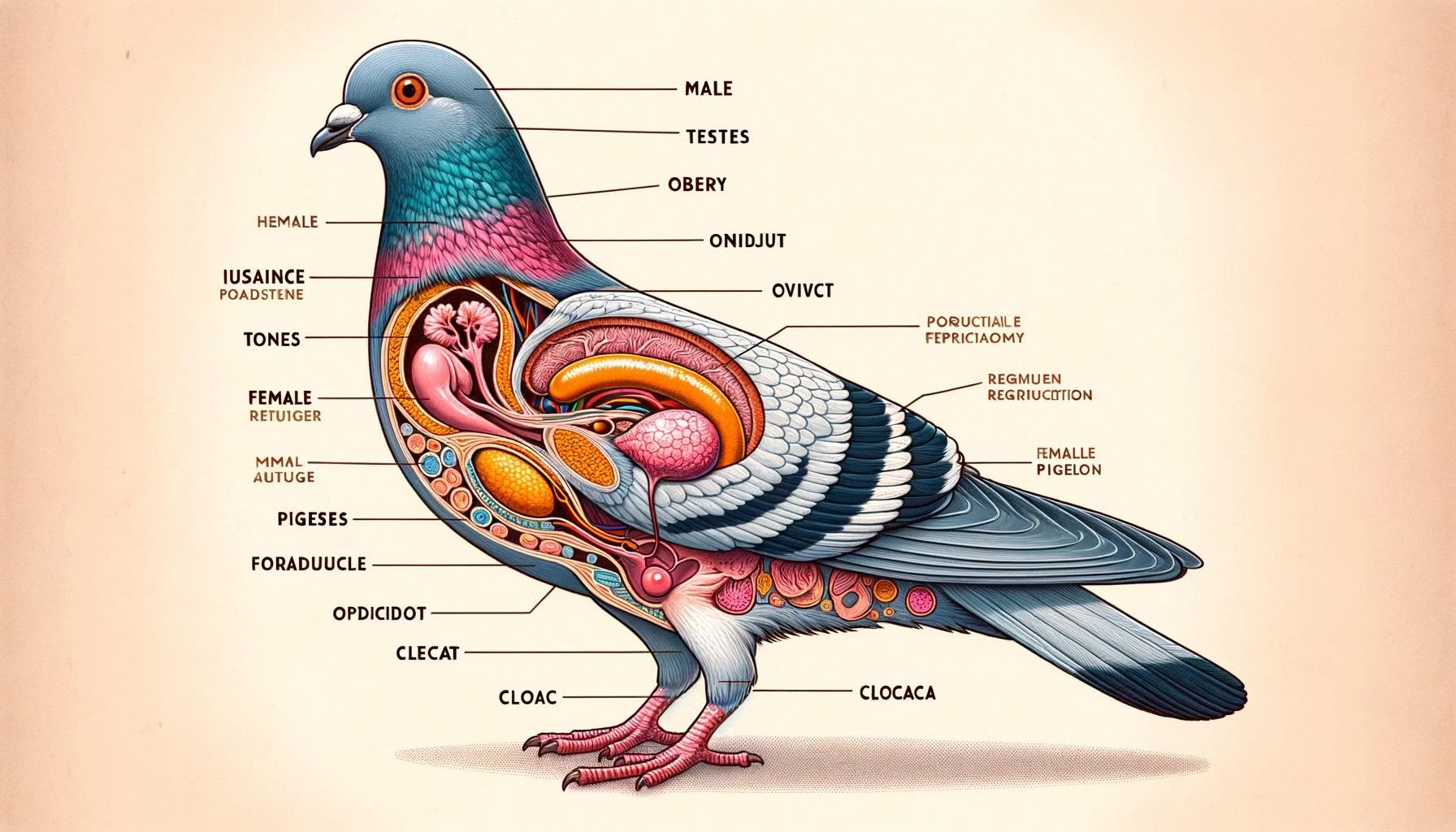Pigeons, like many other bird species, have a unique and complex reproductive system. The male and female pigeons have distinct reproductive roles, and their reproductive behavior is influenced by factors such as hormones, stress levels, and social dynamics within the flock. Understanding the reproductive system of pigeons is important for breeders, researchers, and anyone interested in these fascinating birds.
Key Takeaways
- Pigeons have a unique reproductive behavior where both male and female pigeons can produce crop milk to feed their young.
- The reproductive system of pigeons is sexually dimorphic, with males and females having distinct roles.
- Hormones play a crucial role in shaping pigeon reproductive behavior, including courtship rituals and nesting behaviors.
Anatomy of the Pigeon Reproductive System
The reproductive system of pigeons consists of various organs and structures that work in harmony to facilitate reproduction. Here are some key components of the pigeon reproductive system:
1. Testes:
Male pigeons have two testes located within the abdomen. These testes swell during the breeding season and produce sperm. The sperm is stored in the vasa deferentia, which are tubes leading from the testes to the cloaca.
2. Ovary:
Female pigeons have only one ovary, although two are present in their embryonic stage. The ovary contains all the egg cells that the female will need to reproduce in her lifetime. The ovary is connected to the oviduct, which is responsible for the formation and transportation of the eggs.
3. Oviduct:
The oviduct is a complex canal that includes a funnel that holds the ovulated egg. The eggs are fertilized by the male’s sperm in the funnel of the oviduct. As the egg travels through the oviduct, it gains substances and nutrients, and the shell is formed. The egg is then stored in the uterus until it is laid.
4. Cloaca:
Both male and female pigeons have cloacas, which are the reproductive openings. During copulation, the male pigeon mounts the female from behind, and the cloacas touch, allowing for the transfer of sperm from the male to the female. The cloaca also serves as the exit for waste products.
Pigeon Reproductive Behavior:
Pigeons exhibit various reproductive behaviors that are essential for successful breeding and raising offspring:
1. Courtship Rituals:
Male pigeons engage in courtship rituals to attract females. These rituals often involve puffing up their feathers, strutting, and cooing. The male may also perform displays to demonstrate his fitness as a mate, such as bowing, head-bobbing, or flapping his wings. The female then chooses a mate based on these displays.
2. Nest Building:
Once a pair of pigeons has formed a bond, they will work together to build a nest. Pigeons build nests using twigs, leaves, and feathers, and they often choose human-built structures such as window ledges or under bridges. The male helps gather nesting material and guards the female and the nest.
3. Incubation and Parental Care:
After the female pigeon lays her eggs, both the male and female take turns incubating them. The eggs usually hatch after about 18 days. Once the squabs (young pigeons) hatch, they are fed crop milk, a substance secreted by the adult pigeons’ crop. Both male and female pigeons can produce crop milk and share the responsibilities of feeding and caring for the young.
Conclusion
The reproductive system of pigeons is intricate and efficient, enabling them to reproduce successfully. Male and female pigeons have distinct reproductive roles, and their behavior is influenced by hormones, stress levels, and social dynamics within the flock. Understanding the intricacies of the pigeon reproductive system is crucial for breeders, researchers, and anyone interested in these remarkable birds.









